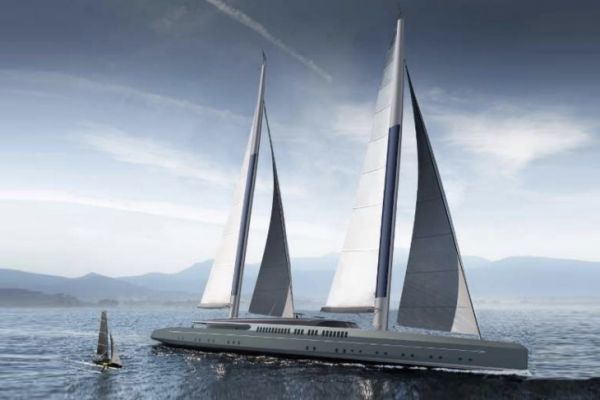
Dutch shipyard Royal Huisman unveils a fully automated sailing superyacht concept to truly sail.
Presented as easy to sail, it also promises significant energy savings.
Presented as easy to sail, it also promises significant energy savings.
From BoatNews by Chloé Torterat
A real super yacht with sails
Wing 100 is a new concept in sailing superyachts from Royal Huisman, in collaboration with Dykstra Naval Architects and Mark Whiteley Design.
This 330-foot, 100-meter-long schooner is not a sail-assisted motor yacht, but a sailing yacht in its own right.
If it is built, it will be one of the 10 largest sailing ships in the world, but above all the largest yacht built by the Dutch shipyard.
The idea is to offer a real sailing superyacht to long-distance cruising enthusiasts, but also to offer an alternative to motoryacht owners with a more sustainable navigation, while keeping the same level of comfort.
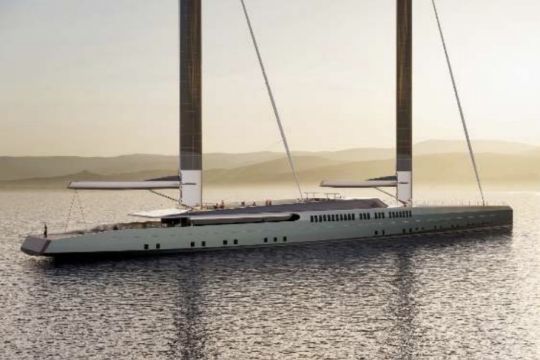
The Wing 100, a sailing superyacht project by Royal Huisman
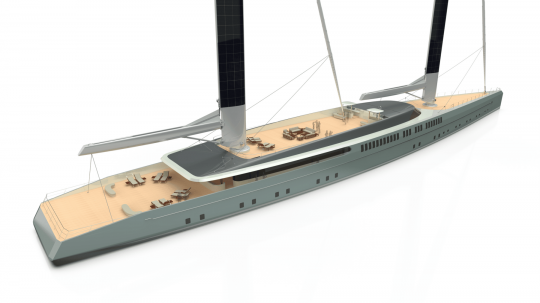
View on the flybridge of the Wing 100
A minimalist design
Entirely built in aluminum, the Wing 100 has a vertical bow, a fairly long waterline and a self-supporting carbon rig, without shrouds or spreaders, or standing rigging, with an air draft of 73 m.
To facilitate the implementation of the sail plan, and thus maximize sailing under sail, the shipyard has opted for autonomous rotating wing masts, remotely controlled and equipped with furling carbon booms.
The mainsails can thus be hoisted in a few minutes, and reefed in the same way in case of a gale.
The estimated speed under sail of Wing 100 could exceed 24 knots.
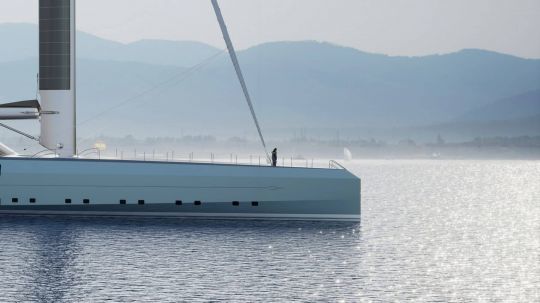
A vertical bow for the Wing 100

Roller booms and wing masts
Equipment to navigate in a more sustainable way
In addition, 480 m2 of solar panels are integrated into the carbon mats to generate 250 kW/day, equivalent to a fuel saving of more than 20,000 liters/year.
A hydro-generator produces up to 200 kW under sail to power the onboard systems and recharge the large battery bank.
This replaces the use of a generator and ensures silence at anchor or under sail.
Eventually, the generator could be replaced by a fuel cell.
In total, all the systems of the Wing 100 have been designed to save about 225,000 liters of fuel per year, compared to motor superyachts of the same size.
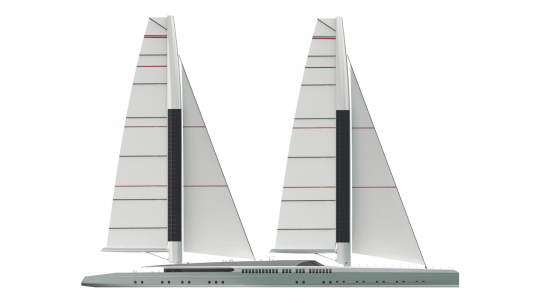
Two masts of the same size for an air draft of 77 m
A development on three bridges
On the Wing 100, the layout is designed for 12 guests, a nanny and 16 crew members.
The living area is spread over three decks, from the flybridge to the lower deck, all connected by an elevator and stairs.
Here you can enjoy outdoor dining and relaxation.
Stairs just forward of the double helm station give access to the bridge deck, a half-deck between the main decks and the flybridge for good operational visibility.
The main deck offers plenty of volume thanks to the long waterline and generous beam.
The interior is sober, with custom spaces for each owner to arrange as they wish.
There could be an owner's suite, a VIP suite, five guest cabins and a nanny cabin.
Crew quarters are located forward.
On the Wing 100, the layout is designed for 12 guests, a nanny and 16 crew members.
The living area is spread over three decks, from the flybridge to the lower deck, all connected by an elevator and stairs.
Here you can enjoy outdoor dining and relaxation.
Stairs just forward of the double helm station give access to the bridge deck, a half-deck between the main decks and the flybridge for good operational visibility.
The main deck offers plenty of volume thanks to the long waterline and generous beam.
The interior is sober, with custom spaces for each owner to arrange as they wish.
There could be an owner's suite, a VIP suite, five guest cabins and a nanny cabin.
Crew quarters are located forward.
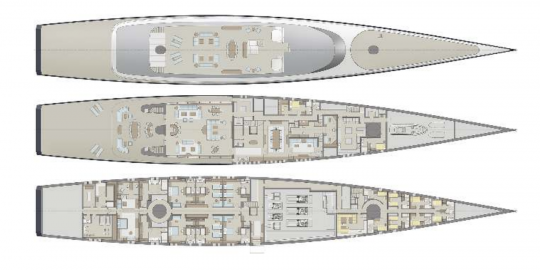
Development of the three Wing 100 decks
The main deck features a 16-person dining room, a bar, an indoor/outdoor lounge and additional outdoor dining areas.
The spacious main deck area has stairs leading to a large swim platform.
This layout is only an example, as each owner can choose the layout that suits him or her.
Links :
- Royal Huisman : Wing 100 unveiled
- SuperYacht Times : Wing 100: The sustainable and energy efficient 100m sailing yacht concept from Royal Huisman
- YachtDesign : Wing 100: Royal Huisman presents the concept for a 100-metre sailing yacht
No comments:
Post a Comment